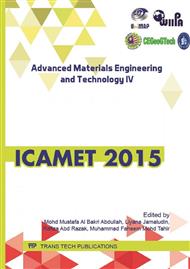p.266
p.271
p.276
p.281
p.286
p.291
p.299
p.305
p.311
Segregation Measurement of Inconel 718 Feedstocks Used in Low-Pressure Metal Injection Molding
Abstract:
Low-pressure metal injection molding (LP-MIM) is an advanced manufacturing technology where a wax-based feedstock is injected into a complex shape before densification heat treatments. Feedstock is generally designed to minimize segregation, maximize flowability, maximize the strength of the molded component, maximize the solid loading potential and ease of debinding. In this study, the emphasis is placed on the evaluation of the effect of segregation on different wax-based Inconel 718 superalloy feedstocks used in LP-MIM. In powder metallurgy, particle or phase segregation generates a fluctuation of the particle distribution in powder-binder mixtures from point to point. Such demixing generally occurs before or during the injection process, and can lead to the formation of defects such as cracks, distortions or heterogeneous shrinkage of the sintered parts. Different wax-based feedstocks were poured in cylindrical hot molds (95°C), maintained in molten state for 1 minutes or for 60 minutes, and rapidly cooled to room temperature. The specimens were then extracted from the top and bottom regions of each cylindrical part. A thermogravimetric analysis technique was used to measure the volume fraction of powder at these two locations in order to quantify the degree of segregation in green parts. The best candidate feedstocks minimizing segregation are the mixtures containing only paraffin wax, or those containing paraffin wax and ethylene vinyl acetate combined. An increase in the time spent in the molten state and the use of beeswax or stearic acid promote the powder-binder separation of feedstocks.
Info:
Periodical:
Pages:
286-290
Citation:
Online since:
May 2016
Authors:
Keywords:
Price:
Сopyright:
© 2016 Trans Tech Publications Ltd. All Rights Reserved
Share:
Citation:


